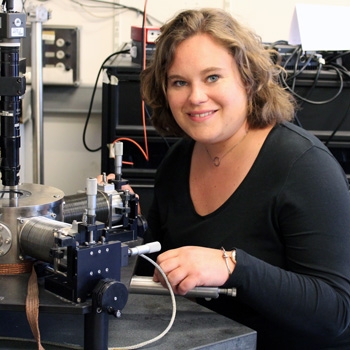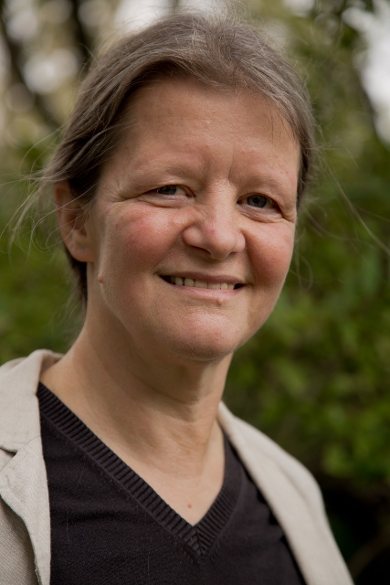Female Researchers in the Spotlight for Physics Ladies Day
On Thursday 9 November, Leiden University organized its annual Physics Ladies Day for female high school students. To mark this festive day, we put the spotlight on two female researchers, who talk about their experiences in physics.
Vera Janssen, PhD student Experimental Physics

‘The moment I got the chance to work in the lab during my Physics studies, I got hooked on science. During my bachelor’s I worked on a project within a research group for a few months. To get my experiment working, I solved a long series of various puzzles. To interpret the data afterwards, you need to have a good problem solving ability.
‘Now I’m doing a PhD. I study the electronic properties of super thin materials. The special thing about these materials is that they are layers of only one atom thick. This ultimately thin geometry is useful for several applications in electronics, but also fundamentally interesting.
‘For my research I make my own samples in a cleanroom. That is a room with multiple machines to create very fine structures on a chip. Afterwards, I do measurements on the samples in a low-energy electron microscope. That is a microscope which doesn’t use light to study a material’s surface, but instead uses electrons. Because electrons interact differently with a material compared to light, you will see completely different features.
‘During my PhD research, each day is different. You never know which new puzzle needs to be solved, or what you need to learn for that and who you get to meet for that. Also the social environment is really nice. I work with people from different countries. That makes you look in a totally different way at all the things you perceive as normal.’
Martina Huber, Assistant professor biofysica

‘In the final years of high-school I had excellent marks in all subjects and broad interests. I eventually chose exact sciences, because they seemed a greater challenge and I wanted to give it a try. My initial choice was chemistry, but during my studies I became interested in large and biologically relevant molecules, and physics was the way to learn about them.
‘From what we did during the study, I liked solving problems. But in the end, doing experiments was what fascinated me most. Understanding why the experiment or the setup doesn’t work and finding the solution is extremely rewarding. Or even finding a different outcome than what we expected from the initial idea is very satisfying. And the real thrill is seeing the big picture emerge later on.
‘I chose for academia, because it allows to focus on a problem and to go to the bottom of it. Teaching students and working together in a research group, with all the different background and talents people have is one of the greatest experiences one can have.
‘One of the advantages of working in science is the international environment. In my field there are excellent groups in Germany, France, Italy, the US and Russia. I worked in San Diego as a postdoc for two years and in Sweden as visiting professor for a year. Both times I learnt about new cultures and different ways of doing science.
‘My group develops high-end sophisticated Electron Paramagnetic Resonance methods that give us better insight into how proteins work. In other words: we use large machines to learn about the nanometer world of life. Our particular interest is flexible proteins, which are important in life and some disease processes. These proteins do not behave like the proteins we know, so to describe them we need new physics.’
